Table of Contents:
Introduction
Market Overview
Critical Factors in Choosing Ski Boots
Top Ski Boots of 2024
Conclusion
Introduction
In the dynamic world of winter sports, the selection of ski boots for the 2024 season stands as a critical decision for skiers who prioritize both comfort and performance. This year’s market brings an array of innovations, reflecting advancements in design, materials, and technology that cater to varying skill levels and preferences. With an emphasis on achieving the perfect fit through Mondo point sizing and understanding the crucial role of flex in aligning with individual skiing styles, our comprehensive guide delves into the essence of choosing the right ski boots. It navigates through the latest market trends and the top models available, offering insights that balance practicality with the evolving demands of modern skiing. Whether for seasoned enthusiasts or young beginners, our guide aims to equip skiers with the knowledge to make an informed selection, ensuring an enhanced and enjoyable skiing experience in 2024.
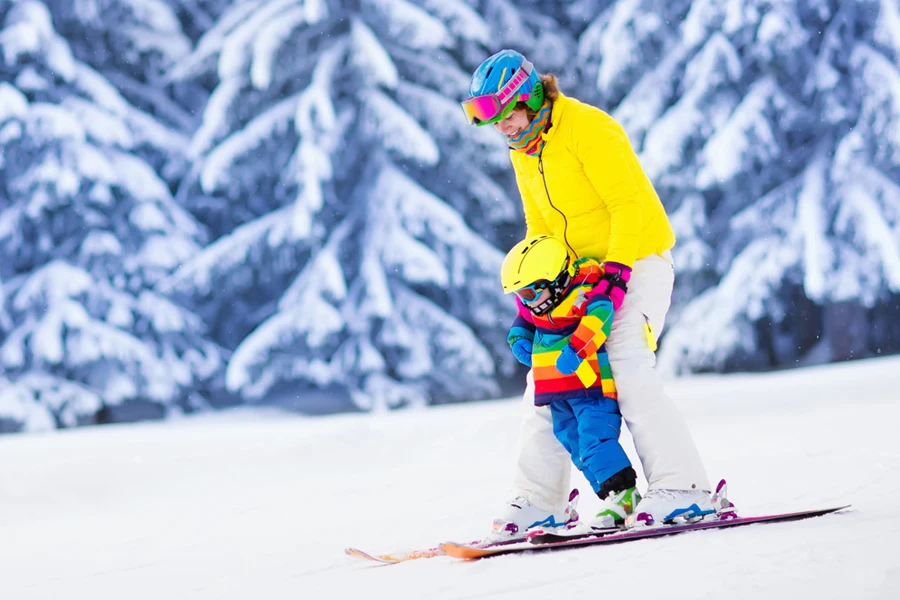
Market Overview
The Global Ski Gear & Equipment Market, valued at USD 1.70 billion in 2023, is on a trajectory of steady growth, with projections indicating a Compound Annual Growth Rate (CAGR) of 3.2%, potentially reaching USD 2.26 billion by 2032. This growth is mirrored in the US Ski & Snowboard Resorts industry, which in 2022 alone was valued at approximately $4.4 billion. The industry not only experienced a significant growth rate of 7.5% in 2022 but also demonstrated a consistent annualized growth of 3.7% over the past five years from 2017 to 2022. Looking ahead, the market size is expected to maintain its upward trend through to 2029. This expanding market landscape underscores the importance of ski boots, a critical component of ski gear. As the market grows, the demand for high-quality, innovative ski boots is likely to surge, driven by the increasing number of ski enthusiasts and the evolving needs of both professional athletes and recreational skiers.
Key players like Descente, Atomic, Rossignol, and Decathlon are dominating the market, continually introducing technological advancements and new designs to meet the evolving needs of skiers. Manufacturers are responding with ski boots that integrate cutting-edge materials and ergonomic designs, catering to both professional athletes and recreational skiers. The market also reflects a growing trend towards customization and personalization, with ski boots being tailored to individual preferences in fit, style, and function.
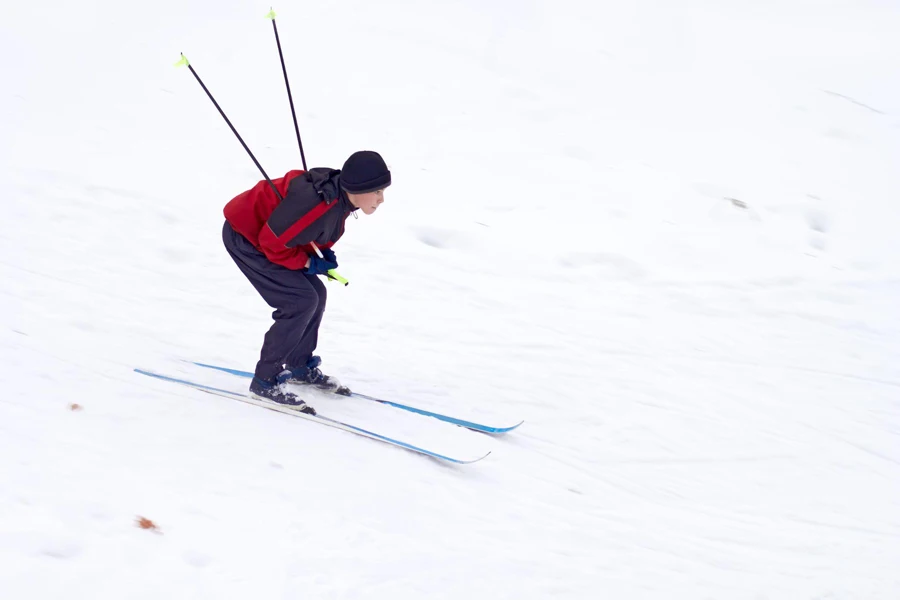
Critical Factors in Choosing Ski Boots
Fit & Comfort:
- Mondo Point Sizing: This universal sizing method measures foot length in centimeters for accurate boot sizing.
- Personalized Fit: Many modern ski boots offer moldable liners and adjustable buckles for a custom fit, enhancing comfort and stability.
- Professional Fitting Recommended: Consulting with experts for a professional fitting is advised to find the perfect match for individual foot shapes and skiing aspirations.
Performance:
Beginner Skiers:
- Flex: Softer flex for easier maneuverability and comfort.
- Fit: More forgiving fit to accommodate learning curves and foot comfort.
- Weight: Generally lighter for easier handling.
- Design: Simple design with fewer adjustments needed.
- Walk Mode: Some beginner boots may include a walk mode for easier mobility off the slopes.
Intermediate Skiers:
- Flex: Medium flex for a balance between comfort and control.
- Fit: Snugger fit than beginner boots for better ski control.
- Adjustability: More adjustable features for a customized fit.
- Materials: Durable materials for improved performance without sacrificing too much comfort.
- Walk Mode: Optional, depending on whether the skier ventures into mild backcountry terrain.
Advanced Skiers:
- Flex: Stiffer flex for precise control at higher speeds and on varied terrain.
- Fit: Performance-oriented fit for enhanced responsiveness.
- Customization: Advanced customization options for fine-tuning fit and performance.
- Materials: High-quality materials for durability and enhanced ski response.
- Walk Mode: Less common unless the boot is a hybrid model for both resort and backcountry.
Expert Skiers:
- Flex: Very stiff for maximum control and precision.
- Fit: Race-fit or very snug fit for optimal energy transfer.
- Customization: High level of customization for perfect fit and performance.
- Materials: Premium materials for the best in durability and response.
- Walk Mode: Rarely included, as focus is on downhill performance; however, hybrid models may offer this feature for versatility.
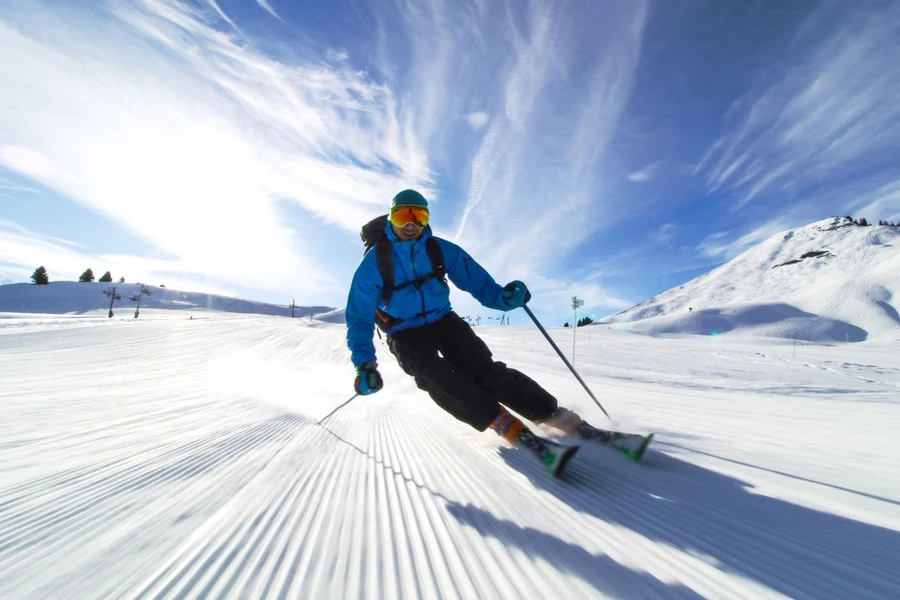
Materials:
Heat-Moldable Shells:
- What They Are: Heat-moldable shells are made from a special thermoplastic material that can be softened when heated.
- How They Work: When these shells are heated (usually by a ski boot technician in a shop), they become pliable. The skier then puts on the warm boot, and as it cools down, the shell molds to the contours of their feet. This process creates a custom fit that matches the skier’s foot shape, providing enhanced comfort and better control.
- Benefits: This customization reduces pressure points, improves comfort, and can enhance the skier’s control over the skis.
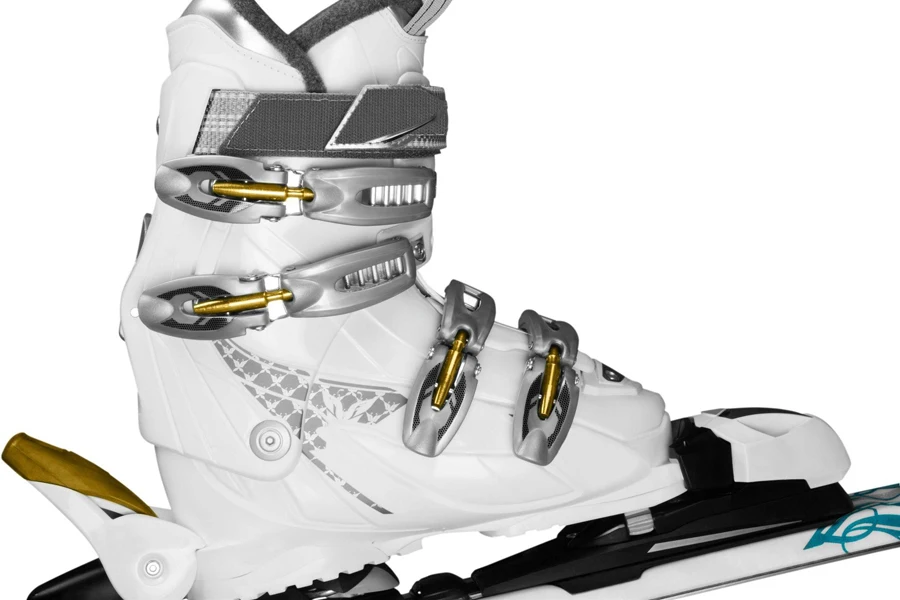
Adjustable Canting:
- What It Is: Canting refers to the lateral (side-to-side) angle of the ski boot in relation to the ski.
- How It Works: Adjustable canting allows skiers to alter this angle. By adjusting the canting, skiers can ensure that their boots are aligned with their natural leg position. This is particularly important for those with leg alignment issues like bowlegs or knock-knees.
- Benefits: Proper canting alignment helps in achieving a more natural and efficient skiing stance, which can improve edge control on the skis and reduce strain on the knees.
Micro-Adjustable Buckles:
- What They Are: These are precision buckles on the ski boots that allow for very fine adjustments in how tightly the boot fits.
- How They Work: Unlike traditional buckles, which have a set number of positions, micro-adjustable buckles can be finely tuned to achieve the perfect tension. This is usually done by turning a small dial or screw on the buckle, which incrementally tightens or loosens the fit.
- Benefits: This feature allows for a highly personalized fit, ensuring that the boots are neither too tight (causing discomfort) nor too loose (reducing control). It’s especially useful for accommodating the subtle changes in foot size and shape that can occur throughout a day of skiing.

Compatibility with Ski Bindings:
Sole & Binding Standards (Trade Names):
ISO 5355 (Alpine):
- For traditional downhill alpine skiing.
- Boots have a flat, hard sole.
- Compatible with most alpine ski bindings.
ISO 9523 (Touring):
- Designed for ski touring.
- Boots feature a rockered, rubber sole for easier walking.
- Compatible with touring bindings and some hybrid bindings.
GripWalk:
- A newer standard offering improved walkability.
- Boots have a rockered, rubber sole.
- Compatible with GripWalk-specific alpine bindings and some MNC bindings.
Tech (Pin) Bindings:
- For backcountry skiing and ski mountaineering.
- Boots require tech inserts at the toe and heel.
- Compatible with lightweight tech (pin) bindings.
Walk to Ride (WTR):
- Similar to GripWalk, designed for better walking comfort.
- Boots have a rockered sole.
- Compatible with WTR-specific bindings and some MNC bindings.
Multi-Norm Certified (MNC):
- Compatible with multiple sole standards (ISO 5355, GripWalk, WTR).
- Offer versatility for skiers who use different types of bindings.
Alpine Touring (AT):
- Specifically for alpine touring bindings.
- Boots may have tech inserts and a rubber sole.
- Compatible with AT bindings and some tech bindings.
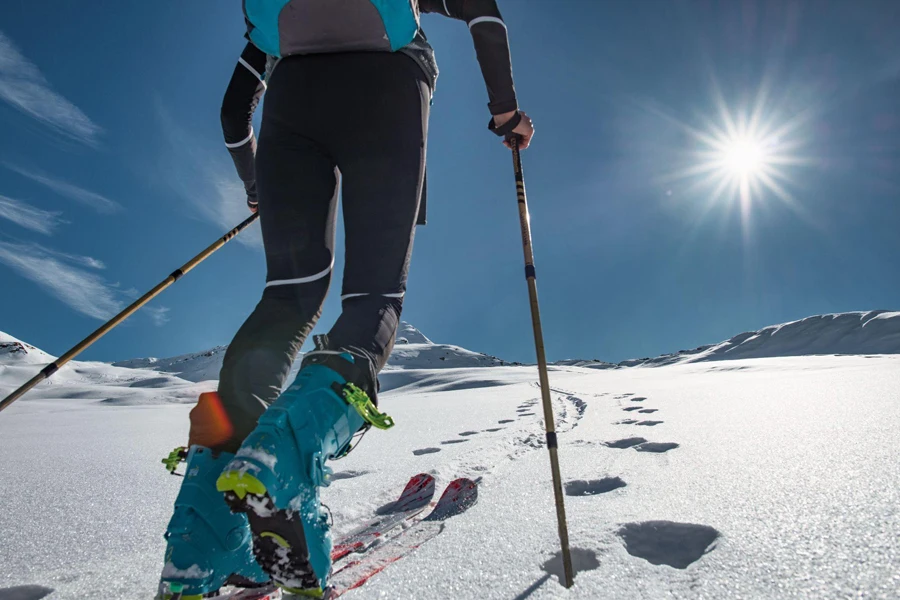
Top Ski Boots of 2024
Adult Ski Boots:
- Tecnica Mach1 MV 120
- Target User: Advanced/expert skiers
- Technology & Design:
- Customizable liner and light, durable polyether shell
- Carbon fiber spine for improved stiffness and precision
- Available in narrow (98mm), medium (100mm), and wide (103mm) widths
- Ideal for both on and off-trail performance
- Salomon S/Pro MV 100
- Target User: Intermediate/advanced skiers
- Technology & Design:
- Heat-moldable shell and seamless liner for comfort
- Coreframe shell for better power transfer
- Medium width (100mm)
- Lightweight design for enhanced control
- Lange Shadow 130 LV GW
- Target User: Hard-charging skiers
- Technology & Design:
- Suspension Blade and Dual Pivot concepts for efficient power transfer
- Moldable shell and liner for precision fit
- Narrow (97mm) or medium (100mm) width options
- High-performance design for precision and control
- Atomic Hawx Ultra XTD 120 GW
- Target User: Skiers who split their time between touring and resort
- Technology & Design:
- Polyurethane shell for a more natural flex
- Lightweight design with a narrow 98mm last
- Versatile for both hiking and downhill skiing
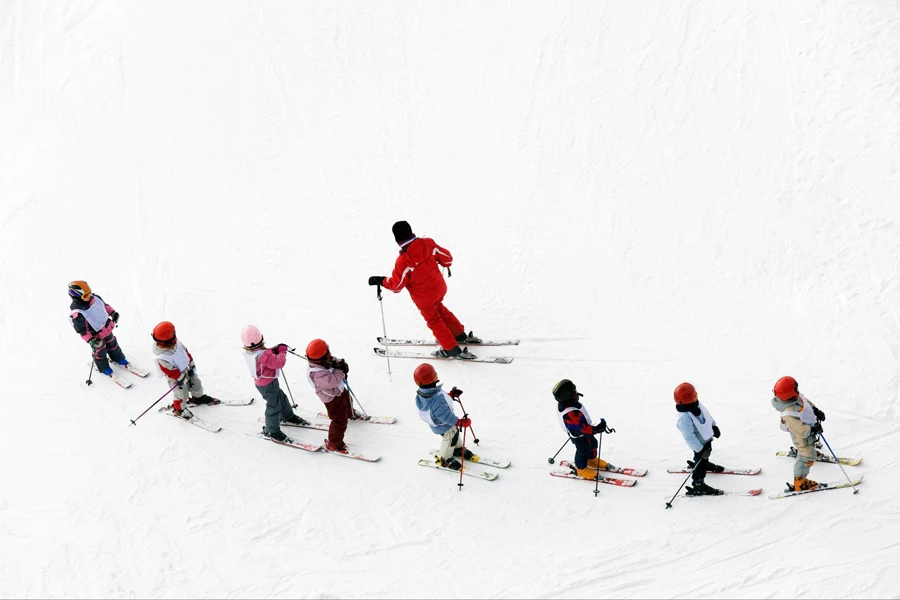
Kids’ Ski Boots:
- K2 Luv Bug 2
- Target User: Young beginners
- Features:
- Lightweight and easy to manage
- User-friendly 2-buckle system
- Design focused on comfort and ease of use
- Salomon T2 RT
- Target User: Young learners
- Features:
- Lightweight with a soft flex for easy learning
- Designed for warmth and comfort
- Rossignol Comp J3
- Target User: Juniors advancing to more challenging slopes
- Features:
- Snug fit and responsive feel for skill development
- Supportive design for young skiers
- Nordica Speedmachine J 3
- Target User: Rapidly progressing young skiers
- Features:
- Adjustable flex and comfortable liners
- Tailored for transitioning from easy trails to demanding runs
- Dalbello J-Tour
- Target User: Versatile use with alpine and junior-friendly frame bindings
- Features:
- Gripwalk soles and ski-walk mechanism for adaptability
- Focus on comfort and usability for young skiers
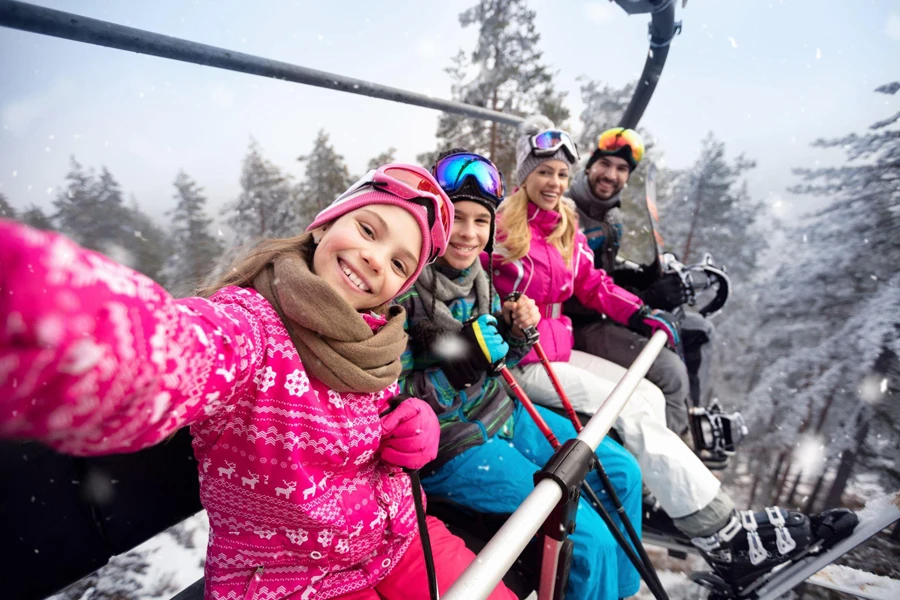
Conclusion
In 2024, selecting the right ski boots is a profound decision that combines personal preference with technological advancements. This comprehensive guide has navigated through the critical aspects of ski boot selection, from understanding the market trends and innovations to analyzing the leading models for both adults and kids. The key takeaway is the importance of finding a balance between comfort, performance, and technology. By considering factors such as fit and comfort, flex and performance, material quality, and binding compatibility, retailers can help their customers make informed choices that enhance their experience on the slopes. With this guide, skiers are well-equipped to select boots that perfectly align with their skiing style and aspirations, marking a step forward in their skiing journey.



